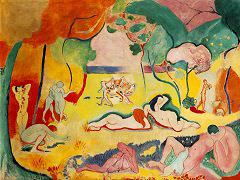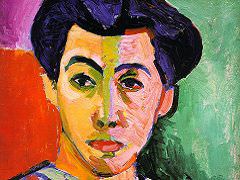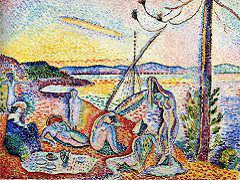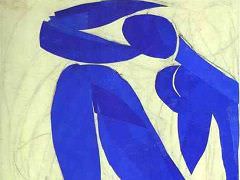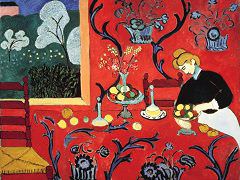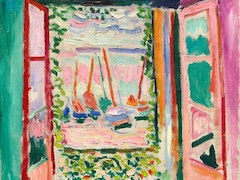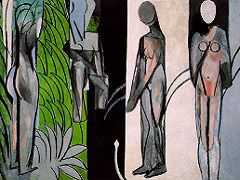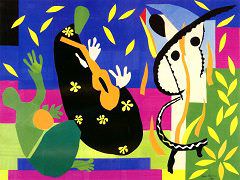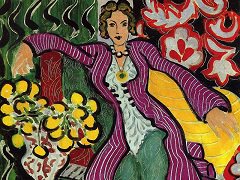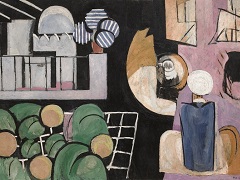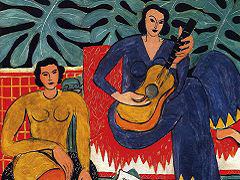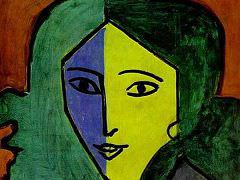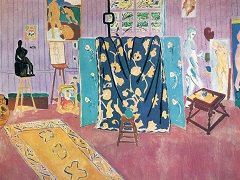Decorative Figure, 1925 by Henri Matisse
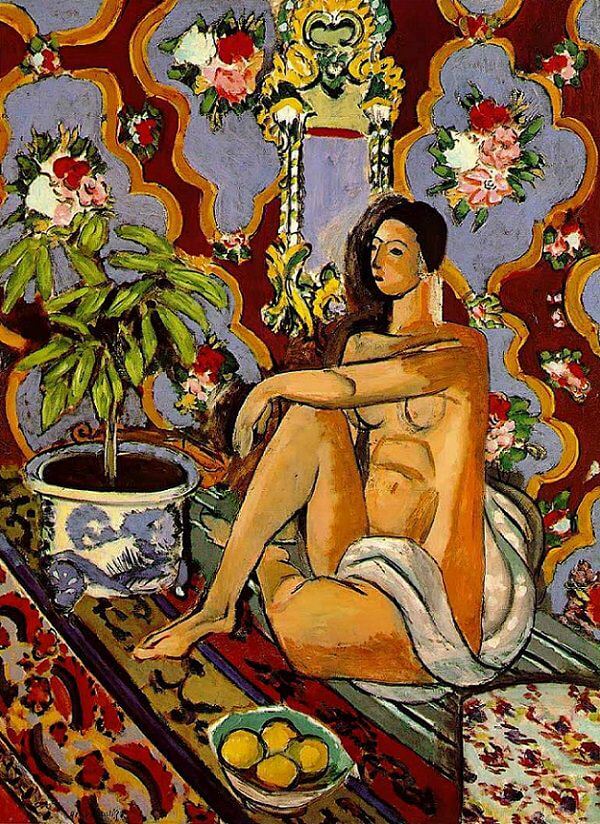
This is traditionally considered the culmination of Matisse's preoccupation with the female nude in an Oriental setting, and, in fact, a kind of turning away from his softer, more sensuous indulgence of the early twenties. But the newly proposed earlier dating suggests a greater complexity (and even contradiction) to his various moves and strategies of the period. A charcoal study for this alternately stark and luxuriant painting exists (signed and dated - but incorrectly - 1927) in which the pose is more relaxed, the left arm falling to the floor and the right leg more gracefully extended. Furthermore, the rendering of the form and flesh is more luminously suggestive in the drawing than in the final painting, where the modeling has become almost as schematic and constructive as that found in his work before 1920. The figure is the culmination of Matisse's Doric mode, begun with Carmelina almost a quarter century earlier. That he could paint so stark a figure at this moment, while also producing others more diaphanous or more erotically fleshlike, demonstrates the control that he exercised during this period.
The background is a remarkable series of variations on a decorative theme, with a nominally repetitive motif that, as painted, never repeats itself in exactly the same fashion. Although the figure sits in stark contrast to the ever varying curves of this backdrop - which contains, nearly lost within its density, the Moorish mirror seen earlier in The Painter and His Model - the drapery twined from behind her back across her thigh serves as the crucial link. The model sits within a grayish zone on the floor, which serves to separate die patterns of the carpet from those of the wall hanging. In addition there are a potted plant, a bowl of fruit, and, in the lower right, the suggestion of the corner of a veined-marble-topped table. Yet, in spite of this profusion of objects and motifs, the composition never seems cluttered; everything falls into place, even the abrupt, unnaturally straight line of the model's back. The tightly interlocked seated pose of the final figure suggests the later Figure on the Beach by Pablo Picasso (1929), one of his eviscerated, bonelike constructions. Moreover, the complexities of this pose would seem to be the point of departure for Matisse's four papiers-decoupes, the Blue Nudes of 1952.

